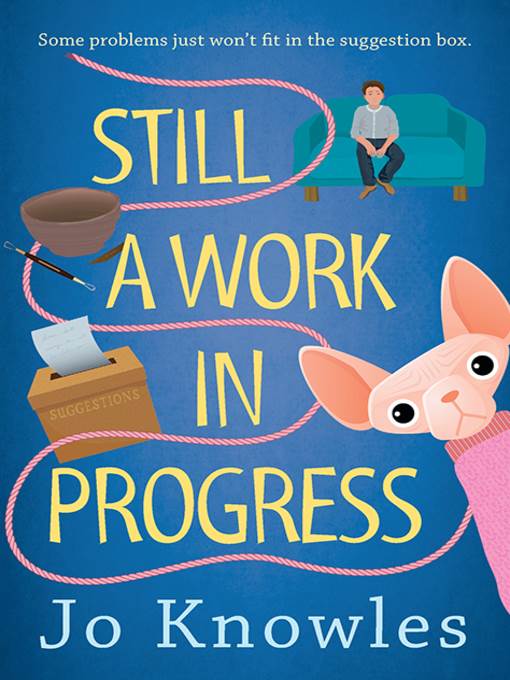
Still a Work in Progress
فرمت کتاب
ebook
تاریخ انتشار
2016
Lexile Score
660
Reading Level
2-3
ATOS
4.1
Interest Level
4-8(MG)
نویسنده
Jo Knowlesناشر
Candlewick Pressشابک
9780763688592
کتاب های مرتبط
- اطلاعات
- نقد و بررسی
- دیدگاه کاربران
نقد و بررسی

June 6, 2016
The quotidian struggles of middle school—unrequited crushes, stinky lockers, boring academics—pale in comparison to the difficulties at seventh-grader Noah Morin’s home, where his older sister, Emma, is wasting away by refusing to eat. Knowles (See You at Harry’s) sensitively explores the pain of having a sibling with an eating disorder, including the exhaustion caused by constant worry, the lack of attention for the healthy child, and the tension at every meal as the family tries to accommodate Emma’s dietary whims while closely monitoring how much she consumes. The story seesaws, sometimes uneasily, between some of the lighter situations that Noah is dealing with—crushes, a hairless therapy cat that roams the school hallways killing mice, a farting dog, etc.—and the dire one involving Emma. Even so, the relative lack of eating disorder stories told from a male point of view (especially for middle graders) makes this a welcome addition to the canon and a realistic look at how one person’s severe illness can adversely affect everyone around them. Ages 10–14. Agent: Barry Goldblatt, Barry Goldblatt Literary.

November 1, 2016
Gr 6-9-Noah, an average, unassuming middle schooler, is the kid his parents "don't have to worry about," as opposed to his older sister, Emma. At home, the family tiptoes around her eating disorder while going along with any and every food-related dictate Emma makes, in the hopes of avoiding a relapse. Noah navigates life with friends and classmates at his small school, but the "Thing They Don't Talk About" hangs over his head, particularly as he starts to suspect it might be happening again. When Emma does relapse, Noah attempts to go through the motions at home and at school, and he turns to his art as an emotional outlet for the pain and uncertainty in his life. Told from Noah's point of view, with fully developed main and supporting characters, the story believably and poignantly shows the effects of an eating disorder on those around the afflicted person. Noah's worry, anger, and guilt are palpable, and his desperation to understand why his sister struggles is often heartbreaking, as is his frustration with the way life goes on around him and his family. The interests of his friends and classmates begin to seem trivial, and readers will find his reactions honest and moving. VERDICT A realistic and sensitive depiction of a family in crisis and a young teen's emotional journey through it.-Amanda Raklovits, Champaign Public Library, IL
Copyright 2016 School Library Journal, LLC Used with permission.

May 15, 2016
For eighth-grader Noah, juggling school, friends, and hormones would be simple enough. Unfortunately, there is also the Thing We Don't Talk About, which looms over his family life.Setting her tale in a small New England town and telling it from Noah's point of view, Knowles presents a small school where students and teachers all know each other. Friends fight and make up, tease, argue, joke, and support each other. The big issues among students are who likes whom and what complaints to put in the Suggestion Box. Back at home, things aren't quite as simple. The white boy's older sister, Emma, has an eating disorder that reached crisis point a couple of years ago. Now, no one mentions it, though the issue is very much present in their daily lives. Family life is allowed to be ruled by Emma's eating dictates, in the hope that Emma will not have a relapse. Unfortunately, not talking about it doesn't make the problem go away. And as Emma again ends up in the hospital and then a treatment center, the family goes into a tailspin. Feelings of guilt, grief, bewilderment, and anxiety pervade Noah's present-tense account. Through his eyes, Knowles offers a touching and realistic picture of the effect on those surrounding a person with an eating disorder.A poignant window and mirror into the lives of families affected by a health disorder. (Fiction. 11-14)
COPYRIGHT(2016) Kirkus Reviews, ALL RIGHTS RESERVED.

























دیدگاه کاربران